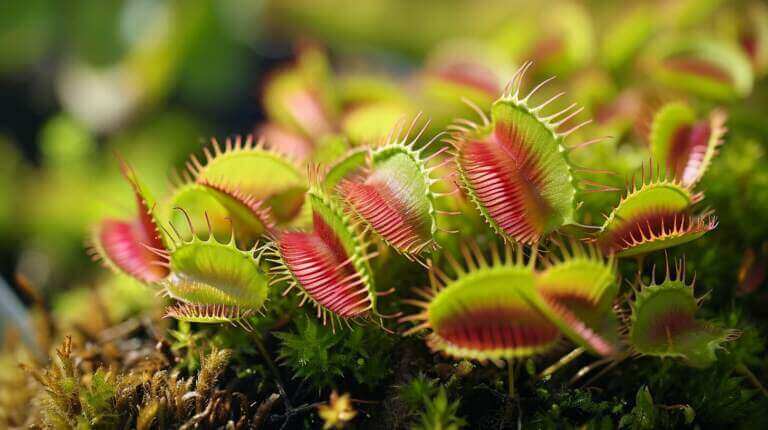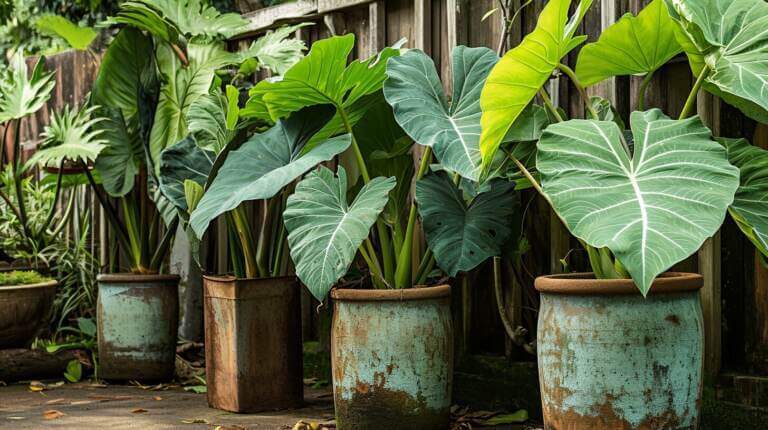Knowing When to Repot a Fiddle Leaf Fig Tree: Your Complete Guide
One of the most common questions among fiddle leaf fig owners is when to repot their plant. Repotting should only be done when necessary, as fiddle leaf figs don’t like change and can experience shock if their routine is disrupted. There are several situations that may indicate it’s time to repot your fiddle leaf fig. These include when the tree has outgrown its pot, when the soil is pulling away from the edges of the pot, or when roots are popping out of the top or bottom of the pot. Repotting may also be necessary if the plant has been affected by animal accidents or bacterial infection. On the other hand, there are situations where repotting may not be required, such as when the plant is experiencing root rot or when it has just been brought home from the nursery. It’s important to assess the specific condition of your fiddle leaf fig before deciding to repot.
Key Takeaways:
- Repotting a fiddle leaf fig should only be done when necessary, as the plant may experience shock from the change.
- Signs that it’s time to repot include the tree outgrowing its pot, soil pulling away from the edges, or roots popping out.
- Repotting may be necessary if the plant has been affected by animal accidents or bacterial infection.
- Assess the condition of your fiddle leaf fig before deciding to repot, as it may not be required in certain situations such as root rot or recently purchased from a nursery.
When Your Fiddle Leaf Fig Needs Repotting
Your fiddle leaf fig may need to be repotted if it has outgrown its current pot. Signs that it’s time for a new pot include the soil pulling away from the edges of the pot and roots popping out of the top or bottom. Additionally, if your fiddle leaf fig has been affected by animal accidents or bacterial infection, it may need to be repotted.
Repotting is also recommended every 1-2 years to provide fresh nutrients to the plant. When repotting, choose a pot that is only 1-2 inches wider than the current pot. It’s important to ensure the pot has drainage holes to prevent overwatering and root rot. When placing the plant in the new pot, make sure the roots are covered with soil and the soil fills up to within an inch of the top of the pot.
Table: Signs that Your Fiddle Leaf Fig Needs Repotting
| Signs | Description |
|---|---|
| Soil pulling away from pot edges | The soil appears to be shrinking away from the sides of the pot, indicating that the plant has outgrown its current container. |
| Roots popping out of the pot | The roots of the fiddle leaf fig are visible above the surface of the soil or protruding from the drainage holes at the bottom of the pot. |
| Affected by animal accidents or bacterial infection | If the plant has been damaged by animal urine or has developed a bacterial infection, repotting may be necessary to ensure its health and recovery. |
The Best Time to Repot a Fiddle Leaf Fig
Knowing the best time to repot your fiddle leaf fig is crucial to ensure its successful transition and continued growth. Repotting during the right season can greatly reduce the risk of shock and promote healthy root development. The ideal time to repot your fiddle leaf fig is during the growing season, which typically falls in the spring or summer months. During this time, the plant is actively growing and has the highest capacity to recover from the repotting process.
Repotting during the warmer months allows the fiddle leaf fig to take advantage of the abundant sunlight and warmth to stimulate new root growth and establish itself in its new pot. It’s important to avoid repotting during the cooler months when the plant is in a dormant state and conserving energy. Repotting during this time may cause stress to the plant and hinder its ability to recover.
When choosing a potting mix for repotting, ensure that it is well-draining to prevent waterlogged soil and root rot. A recommended potting mix for fiddle leaf figs is a combination of high-quality potting mix, pine bark mulch, and horticultural charcoal. This mix provides adequate drainage while retaining the necessary moisture and nutrients for the plant’s growth.
Assess the condition of your fiddle leaf fig’s roots to determine if it is root bound and in need of repotting. Look for signs of overcrowding, such as roots circling around the root ball or emerging from the drainage holes. If the roots are tightly packed, it’s time to repot your fiddle leaf fig and provide it with a larger pot to accommodate its growing roots.
Table: Comparing the Best Time to Repot Fiddle Leaf Fig
| Time of Year | Benefits | Considerations |
|---|---|---|
| Spring | Active growth, abundant sunlight and warmth | Plant may experience shock if repotted too early in the growing season |
| Summer | Optimal conditions for root development | Avoid repotting during the hottest months to prevent stress |
By repotting your fiddle leaf fig during the best time of year, you can ensure a smooth transition for your plant and provide it with optimal conditions for growth. Remember to choose a well-draining potting mix and assess the condition of the roots before repotting. With proper care and attention, your fiddle leaf fig will continue to thrive and beautify your indoor space.
How to Repot a Fiddle Leaf Fig
Repotting a fiddle leaf fig is an important step in maintaining the health and growth of your plant. Here are some tips to help you successfully repot your fiddle leaf fig:
- Choose the right pot: Select a plastic pot with drainage holes that is 1-2 inches wider than the current pot. Avoid pots without drainage holes, as they can lead to overwatering and root rot.
- Prepare the plant: Gently remove the fiddle leaf fig from its current pot, being careful not to damage the roots. Shake off the old soil and examine the roots for any signs of root rot or damage.
- Repot the plant: Place the fiddle leaf fig in the new pot, ensuring that the roots are covered with soil. Add more soil if necessary to fill the pot up to the same level as the previous pot.
- Water and care for the plant: After repotting, water the plant thoroughly and allow the soil to dry out slightly before watering again. Monitor the plant for any signs of stress and provide additional care as needed.
Table: Repotting Tips
| Tip | Description |
|---|---|
| Choose the right pot | Select a plastic pot with drainage holes that is 1-2 inches wider than the current pot. |
| Prepare the plant | Gently remove the fiddle leaf fig from its current pot, shake off the old soil, and examine the roots. |
| Repot the plant | Place the fiddle leaf fig in the new pot, ensuring the roots are covered with soil. |
| Water and care for the plant | After repotting, water the plant thoroughly and monitor for signs of stress. |
Caring for a Repotted Fiddle Leaf Fig
After repotting your fiddle leaf fig, it’s crucial to provide proper care to ensure its health and vitality. One key aspect of caring for a repotted fiddle leaf fig is maintaining an appropriate watering routine. Water your fiddle leaf fig as needed, keeping the soil consistently moist but not soggy. It’s important to allow the top inch of soil to dry out before watering again. This helps prevent overwatering, which can lead to root rot and other issues.
As you water your fiddle leaf fig, make sure the plant has enough water to support its new growth in the fresh soil. Pay attention to the plant’s needs and adjust your watering schedule accordingly. Keep an eye out for any signs of stress, such as yellowing or dropping leaves, which may indicate improper watering.
In addition to watering, another important aspect of caring for a repotted fiddle leaf fig is providing additional soil if necessary. When repotting, be sure to evenly distribute the soil around the edges, ensuring there isn’t too much of the old soil left behind. This will help the plant establish itself in the new pot and access the necessary nutrients from the soil. If you notice that the plant has outgrown the pot or the soil level has decreased, consider adding more soil to support its growth.
FAQ
How do I know if my fiddle leaf fig needs a bigger pot?
Look for signs such as roots becoming root-bound, the plant outgrowing its current pot, or the soil drying out too rapidly. These are indications that your fiddle leaf fig requires a larger pot.
What is the best time of year to repot my fiddle leaf fig?
The best time to repot your fiddle leaf fig is in the spring, as it allows the plant to recover from any shock and adjust to the new pot before the active growing season in summer.
What type of soil mix is best for repotting a fiddle leaf fig?
It’s recommended to use a well-draining, nutrient-rich soil mix specifically formulated for fiddle leaf figs. Look for a mix with ingredients such as peat moss, perlite, and pine bark for optimal growth.
What size pot should I use when repotting my fiddle leaf fig?
Choose a pot that is 2-4 inches larger in diameter than the current one to allow for proper root growth. Avoid using an excessively large pot, as it can lead to overwatering and root rot.
How do I repot my fiddle leaf fig?
Gently remove the plant from its old pot, loosen the roots, place it in the new pot with fresh soil mix, and carefully pat down the soil. Water the plant thoroughly and place it in a well-lit area to aid in its recovery.
Should I water my fiddle leaf fig after repotting?
Yes, water your plant after repotting to help it settle into its new environment. However, be mindful not to overwater, as the plant may still be adjusting to the change.
Can I place my fiddle leaf fig in a decorative pot after repotting?
It’s best to initially place your fiddle leaf fig in a nursery pot with drainage holes after repotting, as it allows for better control of watering. You can then place the nursery pot in a decorative container if desired.
Is it a good idea to repot my fiddle leaf fig if I notice leaf drop?
If your fiddle leaf fig is experiencing leaf drop and other signs of distress, it may be beneficial to repot it to address any root-related issues and provide a healthier growing environment.







